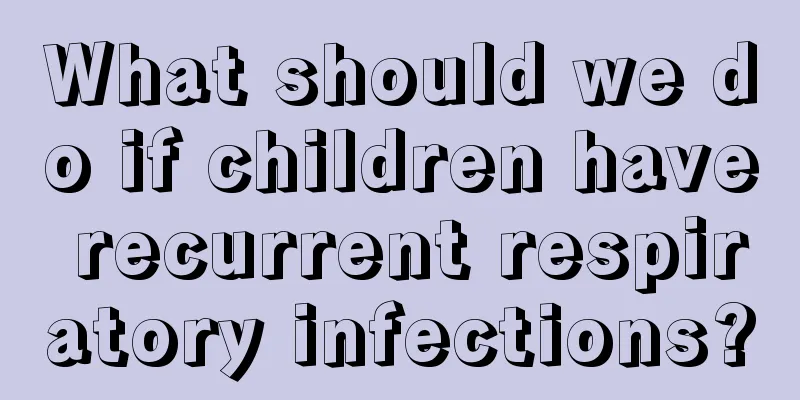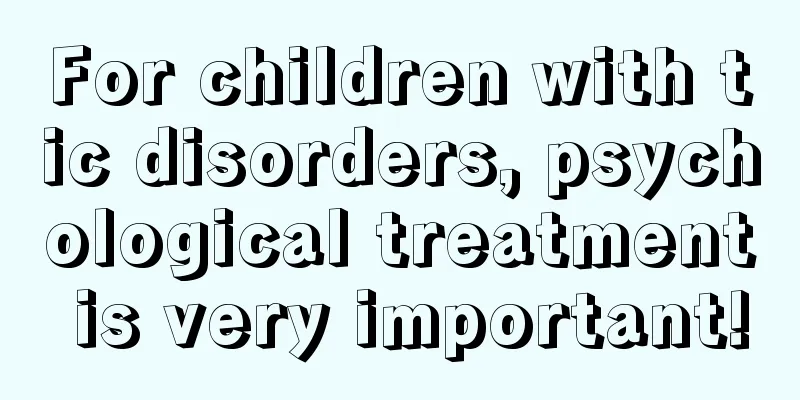Causes and treatment of neonatal seizures

|
A seizure is a temporary disturbance in the function of the cerebral cortex causing abnormal discharges of brain cells. It manifests as sudden involuntary muscle rigidity and clonic convulsions in the whole body or local skeletal muscle groups, causing joint movements, which are mostly whole body and symmetrical. Often accompanied by impaired consciousness. Neonatal convulsions are often caused by perinatal asphyxia, intracranial hemorrhage caused by birth trauma, infection, metabolic abnormalities, etc. What are the causes and manifestations of neonatal convulsions? Let’s take a look with the editor~ 1. Causes Convulsions may be caused solely by abnormal discharges of the central nervous system, but such abnormal discharges may be caused by many primary intracranial lesions (meningitis, cerebrovascular accident, encephalitis, intracranial hemorrhage, tumors), or secondary to systemic or metabolic (such as ischemia, hypoxia, hypoglycemia, hypocalcemia, hyponatremia) diseases. The cause of neonatal seizures is important for diagnosis and is the key to specific treatment and prognosis. The main causes are as follows: 1. Perinatal asphyxia Severe perinatal asphyxia can cause hypoxic-ischemic encephalopathy, which is mainly seen in full-term infants. Its clinical features are impaired consciousness, hypotonia and convulsions. Convulsions usually occur about 12 hours after birth, starting as micro-seizures, which may later develop into tonic or multifocal clonic convulsions. At this time, intracranial pressure often increases, and a more serious consequence of suffocation is intracranial hemorrhage. 2. Intracranial hemorrhage caused by birth trauma Due to the improvement of delivery technology, intracranial hemorrhage caused by birth trauma has become less common in recent years. Physical injury to the head due to difficult labor or prolonged labor can cause tearing of the tentorium cerebelli or falx cerebri, resulting in massive subdural hemorrhage, which is more common in full-term infants with larger body weight. Neurological symptoms usually appear 12 to 24 hours after birth, and localized or multifocal clonic convulsions appear on the 2nd to 3rd day after birth. 3. Periventricular and intraventricular hemorrhage in premature infants This is mainly because the subependymal embryonic germinal matrix has not yet degenerated, has rich capillaries, is extremely sensitive to hypoxia and acidosis, and is prone to bleeding. 2 to 3 days after a severe asphyxiation or hypoxia, clinical symptoms suddenly worsen and neurological symptoms progress rapidly within minutes and hours, manifested by impaired consciousness, hypotonia and irregular respiratory rhythm. With bulging or tension of the anterior fontanelle, tonic or multifocal clonic convulsions soon occur, and those with heavy bleeding will die within 1 to 2 days. 4. Infection Purulent meningitis is the most common type and most cases are postnatal infections, with onset occurring more than one week after birth. The clinical manifestations are nonspecific, with seizures initially being minimal and later becoming tonic or multifocal clonic. If the fetus is infected with rubella, toxoplasmosis and cytomegalovirus in utero, it may cause fetal encephalitis. If the intrauterine lesions persist until birth, convulsions may occur after birth. Sepsis without meningitis can also cause convulsions, which may be related to cardiovascular failure and electrolyte and glucose metabolism disorders in the blood. 5. Metabolic Abnormalities (1) Hypoglycemia: Blood sugar <2.2mmol/L (40mg/dl) is considered hypoglycemia. It is common in infants of diabetic mothers, small for gestational age infants, premature infants, and newborns with ischemia, hypoxia, and other stresses. Hypoglycemia often occurs within 3 days after birth and is often accompanied by the presence of a primary disease. In addition to convulsions, it may also manifest as respiratory apnea, slow consciousness, low muscle tone and difficulty breastfeeding. Hypoglycemia can also be caused by genetic metabolic diseases, such as fructose intolerance, maple syrup urine disease, etc. (2) Hypocalcemia: defined as serum calcium level <1.8mmol/L. Hypocalcemia that develops within 3 days of birth is associated with low birth weight, asphyxia, maternal diabetes, etc. Hypocalcemia that occurs 1 to 2 weeks after birth is usually not accompanied by other diseases and may be caused by maternal vitamin D deficiency, imperfect kidney and parathyroid function of the newborn, and milk feeding. (3) Hypomagnesemia: It often occurs simultaneously with hypocalcemia, but it can also occur alone. Hypomagnesemia should be considered in infants with hypocalcemia who have persistent seizures despite adequate calcium therapy. (4) Hypernatremia or hyponatremia: Hypernatremia is often caused by excessive sodium load or dehydration, while hyponatremia is usually caused by excessive secretion of antidiuretic hormone due to asphyxia, intracranial hemorrhage or meningitis. (5) Congenital metabolic disorders: rare genetic metabolic diseases, including maple syrup urine disease, phenylketonuria, urea cycle disorders, etc. (6) Vitamin B6 dependence: This is a hereditary kynurenine deficiency, and the vitamin B6 requirement is 5 to 10 times that of a normal infant. 2. Other reasons Withdrawal syndrome, kernicterus, central nervous system malformations, incontinence pigmenti, etc. can all cause convulsions in the neonatal period. 3. Clinical manifestations Neonatal seizures are often focal and may be difficult to recognize. Migratory clonic limb jerks, alternating hemilimb seizures, or primary subcortical seizures (respiratory arrest, chewing movements, persistent eye deviation, paroxysmal changes in muscle tone) are common. Grand mal seizures are rare. Clonic muscle activity accompanied by increased muscle tone and irritability must be distinguished from true convulsions. Irritability will only produce clonus after stimulation, and holding the limbs still can stop clonus. Convulsions occur spontaneously, and the limbs can still be felt shaking when they are held. IV. Treatment The first is to target the primary lesion, and the second is to treat convulsions. Treatment of the cause is more important than anticonvulsant therapy. The child should maintain normal ventilation and gas exchange functions. After reading the causes, symptoms and treatments of convulsions, we know that convulsions are indeed a common and relatively critical disease in newborns. New mothers are inevitably at a loss when encountering convulsions. After reading the editor’s introduction, do you have a clear idea in mind? Take good care of your baby, try to reduce the occurrence of convulsions, and let your baby grow up healthily and happily. |
<<: What causes calf muscle pain in children?
>>: Treatment measures for eczema in one month old baby
Recommend
6 Disadvantages of Elderly People Raising Children
Society is developing rapidly, and the educationa...
What to do if a 5-year-old girl has vulvar itching
Under normal circumstances, the vaginal area of ...
What should I do if my child always has bad breath?
Some mothers find that their children always have...
What should I do if my three-month-old baby loses his hair?
Some babies have experienced hair loss, which ser...
My baby is 22 days old and his jaundice has not subsided. What should I do?
If your baby's jaundice has not completely su...
What medicine is effective for a 10-year-old child with a fever?
Everyone has experienced a fever, and we all know...
What are the symptoms of vesicular conjunctivitis in children?
Nowadays, babies have become the backbone of a fa...
What can children with anemia eat to replenish blood?
Children's physical development is very fast,...
What causes fetal hemangioma?
In the clinical practice of children's diseas...
Why does my child have dark skin?
Compared to adults, children's skin is more d...
Can children eat black chicken?
Children can eat black chicken, mainly because bl...
What are the physical examination items for children in kindergarten?
When a child is about to enter kindergarten, he o...
Why doesn't a newborn baby cry?
I believe that many new parents, although they ar...
The harm of too long foreskin in boys
Many boys have the problem of foreskin being too ...
Symptoms of intracranial hemorrhage in infants falling out of bed
The phenomenon of babies falling out of bed shoul...









